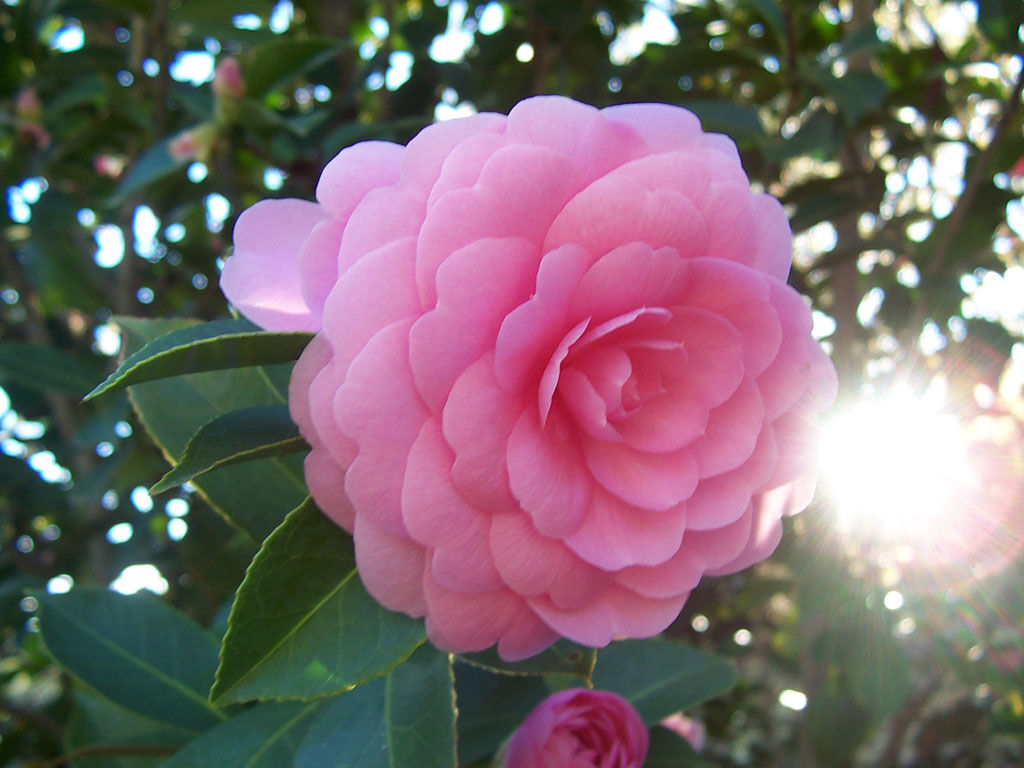ONE GARDENER TO ANOTHER: The path of the Camellia
Published 7:00 am Monday, February 1, 2021

- The Camillia is the Alabama state flower
I don’t know if they still teach this in grade school, but back in the day, we learned about our state’s symbols. Every state has a list, and although different states have varying categories, they all have the most common symbols, such as tree, bird and flower.
Alabama has more than 40 official state symbols, which have been voted on and approved by the Alabama Legislature. We are unique in being the only state to have a state Bible, which is used to swear in our governors and dates back to 1853. Along with birds, butterflies, insects, fish and an official song and dance, there are quite a few growing things present on the list that are common in many Alabama gardens.
One of the most notable, with an interesting history, is Alabama’s state flower, the Camellia (C. japonica). Although widespread in gardens of China and Japan for centuries, it was eventually imported to the U.S., by way of Europe, in 1797 by Col. John Stevens.
Stevens, the inventor of the steam-powered ferry and owner of the first commercial ferry service, had bought farmland, which is now the city of Hoboken, New Jersey, to oversee his ferry business. On this land, he built a home and hotel, constructed a scenic path along the waterway and cleared a large area for people to come and enjoy the great outdoors.
It was for this area, which he named Elysian Fields, that he brought the camellia home from Europe to add as an attraction for visitors to enjoy. Baseball buffs may know these fields as the “birthplace of baseball,” as it was there that the Knickerbocker Club rented the space and worked out the rules of the game. They played what is considered to be the first baseball game on this field against the New York Nine in 1846.
It wasn’t long before the camellia became a sought-after plant and had made its way south into the ideal climate of Alabama gardens. There are giants in any arena, and in the camellia world, Sawada, Dodd, Rubel and Kiyono, all nursery owners in the Mobile area, stand above the rest. Through their devotion to the development of camellia varieties, they made Alabama the heavyweight champ of camellia production.
Although Mobile was the production center, it was the efforts of the Alabama Camellia Society, based in Greenville, that the camellia became our state flower. After a local Greenville newspaperman added “The Camellia City” to the paper’s front-page banner, local businesses, as well as city administrators, started using the slogan. It was adopted as the city’s official flower in the late 1930s.
When the Alabama Camellia Society was founding in 1948, they immediately began petitioning for the camellia to become the state flower. After a failed attempt in 1949, the society finally succeeded on Aug. 26, 1959, when the bill was passed. Camellia japonica was later designated as the specific variety of the state flower in 1999. Another variety, Camellia sinensis, is the species of plant whose leaves are responsible for most of the world’s tea, including black, oolong, green and white tea.
Camellias are hardy in Zones 7–10, where we experience mild winters. Cultivars have recently been developed that can withstand temperatures that drop below 0 degrees Fahrenheit and have shown the ability to grow in Zone 6, given the right location and care.
The camellia, which is an evergreen, has varying bloom times, with early bloomers in fall, midseason bloomers in winter and late bloomers in spring, based on climate and variety. Some varieties do better than others, where we are in the northern part of the state. These include early and late flowering single, semi-double and peony varieties.
Cold snaps that dip below 20 degrees can affect both blooms and buds, although they may have little effect on the plant itself. Camellias produce best when planted in partial shade, ideally in a northern or western exposure, protected from strong morning sun in winter.
Camellias do well when planted near pine trees, where they receive dappled light and have the added benefit of the dropping pine needles for mulch, which also helps the plants’ preference for slightly acidic soil.
Being that there is a society dedicated to camellias, there is a lot of information about growing and planting them. Camellia aficionados seem to agree they should be planted slightly different than you would normally plant a shrub. The hole should be dug twice the diameter and one and a half times as deep as the root ball.
Before planting, arrange a small pile of pine bark mulch and soil in the center of the hole. Place the root ball on top of the pile, and fill the hole halfway with soil. Water thoroughly, and continue to fill the hole around the base of the plant, pressing down gently, then watering again. The top of the root ball should be slightly above ground level. The plant will settle over time, and you don’t want it sinking below ground level. As with most plants, spread a good layer of mulch over the area.
Camellias are the prized flower of the great state of Alabama and will celebrate the Heart of Dixie in your garden. Until next week, happy gardening.
— Irland, a member of the Limestone County Master Gardeners, can be reached at kippirland@hotmail.com. Visit https://mg.aces.edu/limestone for more information on the Limestone County Master Gardeners.



